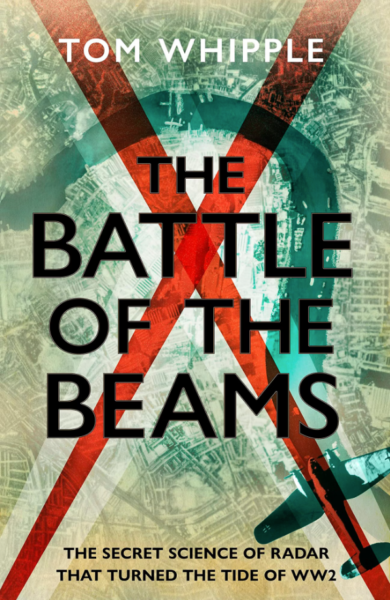World War Two
Published 25 Jul 2023The destruction of German cities has shown how difficult it is for the heavy bombers of the RAF and USAAF to hit small targets with precision. Things will be no different when these big beasts go into action to support the D-Day landings. Thousands of French civilians will pay the price for the flawed logic of Allied bombing.
(more…)
July 26, 2023
Bombing France into Freedom – War Against Humanity 105
Justin Trudeau’s odd choice to agitate Muslim Canadians over his LGBT beliefs
In the weekend’s roundup post from the editors of The Line, one of the topics discussed was Prime Minister Trudeau’s attempt to blow smoke up the collective butts of deeply religious Canadian Muslims that the only reason they were upset about his blatant dedication to LGBT issues was due to brainwashing by extreme right-wing Americans:
this week offered us a video clip of Trudeau that was just too interesting for us to pass up. Readers may recall a story from a few weeks ago in which several Muslim students in Edmonton absented themselves from Pride events and were lambasted by their teacher, who told them that they had to support this event or they “can’t be Canadians.” We didn’t make much note of it at the time because our colleague and friend at the National Post Colby Cosh had the definitive and winning take: that is, the teacher is a fucknut. These kids didn’t protest or object to pride or make their peers feel uncomfortable in any way. They just declined to participate. And in a pluralistic society, politely absenting oneself from ideological events with which one disagrees and instead hanging out at the Orange Julius or wherever the hell kids spend time these days is about the most perfect and Canadian response.
Perhaps not coincidentally, upon receiving such clear signals about the conduct that is now expected of a Canadian, Muslim parents are organizing ever louder protests against what they deem to be LGBTQ “indoctrination” in schools. And if you’ve been paying any attention to the logic pretzels that have been spun about intersectionality, lived experiences, the importance of listening to minority voices in majority cultures and so on, this is about the point at which you’re going to grab the popcorn, because what we have here, ladies and gentlemen, is a bona fide clash of values between competing minority interest groups.
So we give the prime minister a lot of credit for meeting with Muslim parents in a Calgary-area mosque last week to discuss the issue. And we mean that! Genuinely! Heading face-first into a mob of angry parents is a really difficult thing for anybody to do. He deserves credit for doing this.
However, the response that was recorded by attendees was also very, very interesting. The furore over LGBTQ issues in schools is much ado about nothing, he insisted; the result of right-wing extremists spreading “a lot of untruths about what’s actually in provincial curriculums”.
Trudeau continued: “They are weaponizing the issue of LGBT, which is something that, yes, Islam has strong opinions on …. That is something that is being weaponized by people who are not doing it because of their interest in supporting the Muslim community.”
A few notes about this response: The first is that it is undeniably true. There are anti-LGBTQ activists who are trying to mobilize the Muslim community because this minority population has greater moral suasion among the intersectionality set than socially conservative white Christians. There are right-wing commentators out there who focus on cases, videos, examples and books that they claim demonstrates a pervasive trend of “indoctrination” on LGBTQ issues in school environments. The examples are out there, and some are age-inappropriate. However, we have no sense that those examples are representative of what’s happening in most classrooms. Are there a lot more non-binary 12-year-olds in middle school nowadays? Sure. Is that a problem? We don’t know. Maybe? But we’ve yet to walk into an elementary school hosting a 24/7 Pride Parade with naked men and women throwing rainbow glitter and condoms to the kiddies. We are savvy enough media consumers to know that in a social-media age, edge cases have a habit of being falsely portrayed as routine.
Our snark aside, Trudeau’s response is interesting because it is also a dodge. Trudeau doesn’t actually want to deal with the hard problem of how to accommodate competing minority rights. So instead he pretends there is no problem. He blames the perception of a problem on disinformation agents. Marvellous — right up until the moment we see some video from a Toronto school of a teacher screaming at eight-year-olds that there is no such thing as boys and girls and that the whole concept of biological sex is an expression of imperialism and white supremacy. (Ed note: pin this graf for future victory lap.)
Or, just as an example of the sort of thing that just maybe could happen, when an ostensibly trans shop teacher shows up to class in a wig and Size-Z prosthetic breasts with armour-piercing nipples and the school board responds by saying “This is not a problem, you bigot,” and then it turns out that the teacher in question hasn’t been entirely upfront about their life! Or until, well, some teacher tells a bunch of Edmonton kids that skipping pride to head to the mall makes them un-Canadian. Oops! Wait, so who’s lying now?
The second reason we found this response interesting is that it’s become this government’s go-to deflection. All criticism is just disinformation. Anybody who disagrees with the Liberals is a baddie because can’t you see how awesome and empathetic and genuinely well intentioned they are? Throw in a little threadbare virtue, a touch of white saviour: “you, poor, deluded, Muslims, are just being manipulated by malign forces and can’t possibly understand what you’re saying or what you really believe,” and you’ve got a pitch-perfect urban progressive Canadian non-comment. It’s a mask slip moment, when we see exactly how Trudeau seems himself, and how he sees the people he’s talking to. Oh wait: actual Muslims find this statement condescending and insulting? Don’t they know whose side they’re supposed to be on? Maybe they’re just watching too much Matt Walsh. Why does anybody need to define what a woman is anyway? Maybe we need a new law for that so the plebes stop getting so confused …
You see where this logic takes us. We may wade into this one a bit more at The Line in coming days and weeks, so enough said for now. But for now, it’s enough to note that this is not how a mature, pluralistic society handles irreconcilable differences in values and beliefs. Generally speaking, everyone is pretty content to let adults live and let live, but when you bring kids into any ideological agenda, expect matters to get ugly quickly. And you’re going to need a better response to legitimate concerns about how an emerging secular ideological consensus around gender and ideology crashes against deeply held religious values than: “YouTube lies”.
Making & Using Drill Bit Guides | Paul Sellers
Paul Sellers
Published 24 Mar 2023Drilling perpendicular holes on a drill press or pillar drill are as easy as a wink, but when the project is too big or fixed in place, we sometimes need the same accuracy — otherwise, whatever we fit into the hole will not be aligned well at all.
Making a couple of drill guides could not be simpler. I designed two, which I use all the time for twist drills and auger bits. Try them yourself. You won’t be disappointed.
——————– (more…)
QotD: Things were better in “the old days”
… everyone of a certain age, but especially those who love history, tend to assume everything was better in the past, because the present sucks so much.
For example, beer. As ganderson points out in the comments below, beer these days is better than it has ever been. I quote:
the “old” microbrew brands, like Sam Adams, Summit, Sierra Nevada, Brooklyn, etc, are shunned by many millennials as not hip enough.
The very fact that excellent suds like Sam Adams can be found in gas stations across the land — making it tragically un-hip — is all the proof you need of ganderson‘s thesis. I didn’t mean to leave the impression, below, that I consider Lone Star, Natty Lite, etc. to be good beer. They are, in fact, very bad beers. But since I went to college back in the days, and was on scholarship to boot, my choices were almost always between “bad beer” and “no beer”. And since beer, any beer, made me much more interesting and attractive to the opposite sex, and they to me, it was never really a choice at all. I have great sentimental attachment to Lone Star beer, but the very thought of drinking it gives me a hangover. […]
The modern world sucks, but lots of things are far better now. Cars, too. I know, I know, they’re mostly Karen-mobiles, but the muscle cars have a hell of a lot more muscle, and they’re orders of magnitude more reliable. I grew up in a world where you could reliably expect cars to start falling apart at 30,000 miles on the odometer – you expected to lose an alternator at 30, a starter at 50, and by 100K miles you’d have a beater, no matter how scrupulously maintained. These days, with just routine idiot maintenance 100K passes without a hitch. That’s a win, and if “shade-tree mechanic” no longer exists (since you need three computers and a special wrench just to get to the spark plugs), well … still a win.
Materially, these days, most things are better, and the things that aren’t better are cheaper, way cheaper. It’s an open question as to whether the latter fact is good or bad, but the fact is, materially life really is, in some ways, what the Leftards say it is. We pay the spiritual price for most of it, but when it comes to alcohol, at least, give me the Current Year.
Severian, “A Historian’s Fallacy”, Rotten Chestnuts, 2020-12-07.
July 25, 2023
If you bet on Admiral Franchetti becoming the next CNO for the US Navy, collect your winnings
I don’t follow US military appointments closely because I’m not in the military, nor an American, so the first time I think I heard of Admiral Franchetti was back in May where Brent Ramsey’s report touted her as the one to watch for the upcoming appointment as the Chief of Naval Operations (she became VCNO in September 2022). Now, CDR Salamander confirms that Admiral Franchetti is almost certainly now the “CNO in waiting”:
I am sure that everyone here understands that at the end of last week white smoke rose over The Navy Yard signaling that we had an official nominee for the next Chief of Naval Operations (CNO).
Barring some Ottomanesque bureaucratic defenestration like we saw as Admiral Moran was set to be CNO after Admiral Richardson, the nominee to replace Admiral Gilday as CNO will be Admiral Franchetti — presently the Vice CNO.
Because people in DC can’t seem to keep their mouths shut when they should, unfortunately in mid-month there were some leaks coming out that Admiral Paparo would — surprisingly as the general consensus was the Franchetti was slotted to be the next CNO — be recommended to be the next CNO.
Read the link above it you’re interested in the state of play on the 13th, but things wound up heading as most thought with Franchetti getting the nod. Exceptionally well prepared for INDOPACOM, Paparo will head to there where he is expected to continue to do great and important things for the Navy and the nation it serves at at time where we have no luxury for a learning curve.
Despite Ramsey’s article not-so-subtly raising doubts about Admiral Franchetti’s qualifications for the post, CDR Salamander seems to be signally unruffled with the news:
Her wiki page has a nice concise summary;
Since promotion to flag rank, Franchetti has held appointments as: commander, United States Naval Forces Korea; commander Carrier Strike Group 9; commander, Carrier Strike Group 15; and chief of staff, Joint Staff, J-5, Strategy, Plans and Policy; and Commander, United States Sixth Fleet, Naval Striking and Support Forces NATO; deputy commander, United States Naval Forces Europe; deputy commander United States Naval Forces Africa; and Joint Force Maritime Component Commander.
- Western Pacific: she knows Korea and all associated areas. She also has Pappy coming in to INDOPACOM — an exceptional partner. I hope they have a solid professional relationship already.
- Fleet Challenges: from maintenance to readiness, her time leading CSG-9 and CSG-15 gave her a first person look at it. She knows it.
- JS J5: that speaks for itself.
- C6F et al: she knows Europe and has already built a working and personal relationship with many of her peers in NATO. She’s seen up close what they do and how they do it. Invaluable.
- VCNO: the most important. She’s seen OPNAV and the Potomac Flotilla up close. The greatest danger to her tenure as CNO — and as such our Navy and the nation it serves — is not spotty relationships with the SECNAV and his staff; it not Congress; is not the press; is not the economy; and it sure isn’t her Sailors writ large — no — the greatest threat is the long-dwell nomenklatura in a commuting distance of The Pentagon and The Hill who do not see their job as adjusting their responsibilities to support the CNO, but to bend the CNO towards their personal agendas, projects, and job security. There are some exceptional and valuable people there to support the CNO, but the organization is worm-ridden with rent seekers and bad actors. She’s seen that up close. She knows it.
Since making Flag, she managed to walk around all the rakes, had good luck and timing (part of any success), and she did a solid job as assigned. She has the right experience and performance.
I know a handful of people, some friends of mine for over two decades, who know her personally and have since they were both JOs. With one mild exception, these people I would trust my family with speak well of her. That combined with what I’ve seen in open source works for me.
Chris Rufo, enemy of the [legacy media] people
Last week, Richard Hanania posted this review of Chris Rufo’s new book America’s Cultural Revolution: How the Radical Left Conquered Everything:
Some facts are so shocking that you don’t want to believe them. And if you do believe them, there’s a tendency to forget, downgrade their importance, and often have to be reminded of them again. Here’s one fact that falls into this category: The American education system, or at least the field of education itself, was taken over by literal communists. Those entrusted to teach children and young adults have as their greatest intellectual inspirations lunatics who would clearly have massacred their fellow Americans if they had the chance.
We know this because during the Cold War, some of the leading lights of modern academia were openly in favor of distant regimes that were engaging in mass killings in the name of equality. Some of them, like members of the Weather Underground and Angela Davis, personally participated in violent acts themselves. Instead of locking these people up and throwing away the key, we made them into tenured professors, and some of the most highly cited scholars in the world. They now are major intellectual figures in education schools, which train future teachers and administrators and ultimately control what kids learn, along with the DEI bureaucracies that exert so much control from within our most powerful institutions.
What does one do with these facts? Chris Rufo’s work over the last several years has been about taking them seriously. Tomorrow, he is publishing his first book, America’s Cultural Revolution: How the Radical Left Conquered Everything, which explains the history behind and intellectual foundations of modern wokeness. It serves as a wakeup call as to how bad things are. Many of the facts presented may be familiar to the reader, but taken together, they tell a story that serves as a searing indictment of the American establishment.
Rufo’s book is built around intellectual biographies of four activist-scholars: Herbert Marcuse, Angela Davis, Paulo Freire, and Derrick Bell. He traces their influence through political organizing and propaganda efforts. Marcuse was the intellectual godfather of the New Left. Davis’ Black Panther movement can be considered the precursor to BLM. Freire’s Pedagogy of the Oppressed “became the bible of teachers colleges throughout the United States and created a cottage industry in academic publishing,” with the author’s research having garnered about half a million citations. Finally, Derrick Bell was the force behind Critical Race Theory, a movement that seems to have been resisted and laughed at by most of the academic legal establishment before it wore its opponents down and gained a foothold in top law schools.
I can’t help but feeling a certain parallelism between Rufo’s work and my own. We both started becoming well known for writing about wokeness in the last few years. We both make extensive use of Twitter and longform writing to communicate to the world, and we both have books coming out two months apart with the same publisher trying to explain the origins of the radical ideas and concepts that have taken over American institutions. He’s exactly one year and two days older than me, so we’ve lived through the same formative political and cultural experiences, watching “white” become an epithet and homosexuals go from being a leper class when we were in high school to individuals having a preference that seems almost quaint in the era of public celebration of trans and the alphabet people.
Of course, an important difference is that Rufo has maintained a laser-like focus on wokeness and avoided alienating natural allies as he’s built a broad coalition within the conservative movement to take on the enemy. And his accomplishments have been quite impressive. Rufo was almost single-handedly responsible for Trump banning Critical Race Theory in the federal government, as he’s also developed close working relationships with Ron DeSantis and other politicians. Today, when Republican-controlled states ban gender transitions for minors, forbid the discussion of Critical Race Theory in schools, or abolish DEI offices in public universities, Rufo is serving as an intellectual inspiration to decision makers when he’s not directly involved in the policy process himself. If wokeness is ever defeated, one can imagine a leftist in thirty years writing a book on the career and activities of Rufo the way he writes about Marcuse and others today.
WWI Footage: Narrow Gauge Train Lines in France
Charlie Dean Archives
Published 14 Aug 2013American forces constructing railways throughout France to help move men and supplies during World War One. We see US Army personnel laying the sleepers and track for the extensive network of two foot (60cm) narrow gauge lines, ballasting work, loading and laying of pre-built trackwork. We also see scenes of the railway in action as the little trains trundle along country lanes and through the town streets. The film ends with scenes of the train taking soldiers towards the front lines.
After the war the lines were abandoned and most of the locomotives and rollingstock simply left where they were last used, with many being salvaged by the locals to help with logging activities.
CharlieDeanArchives – Archive footage from the 20th century making history come alive!
QotD: Non-free farm labourers in pre-modern agriculture
The third complicated category of non-free laborers is that of workers who had legal control of their persons to some degree but who were required by law and custom to work on a given parcel of land and give some of the proceeds to their landlord. By way of example, under the reign of Diocletian (284-305), in a (failed) effort to reform the tax-system, the main class of Roman tenants, called coloni (lit: “tillers”), were legally prevented from moving off of their estates (so as to ensure that the landlords who were liable for taxes on that land would be in a position to pay). That this change does not seem to have been a massive shift at the time should give some sense of how low the status of these coloni had fallen and just how powerful a landlord might be over their tenants. That system in turn (warning: substantial but necessary simplification incoming) provided the basis for later European serfdom. Serfs were generally tied to the land, being bought and sold with it, with traditional (and hereditary) duties to the owner of the land. They might owe a portion of their produce (like tenants) or a certain amount of labor to be performed on land whose proceeds went directly to the landlord. While serfs generally had more rights (particularly in the protection and self-ownership of their persons) than enslaved persons, they were decidedly non-free (they couldn’t, by law, move away generally) and their condition was often quite poor when compared to even small freeholders. Non-free labor was generally not flexible (the landholder was obliged to support these folks year-round whether they had work to do or not) and so composed the fixed core labor of the large landholder’s holdings.
Bret Devereaux, “Collections: Bread, How Did They Make It? Part II: Big Farms”, A Collection of Unmitigated Pedantry, 2020-07-31.
July 24, 2023
Revolutionary boredom
Chris Bray rises to passionately denounce [Comrade to be named later] as a traitor to the revolution who must be purged from the movement instantly!
Well-written histories of the Great Terror or the Cultural Revolution — or of the final years of the Roman republic, say for example — have the strange effect of becoming incredibly boring. The 94th bonfire of humanity, appearing on page 678, resembles the previous 93 bonfires. The grim machine of political purges makes brutal depravity tedious. Commissar X, Commissar Y, and Commissar Z run the Committee to Kill Wrongthinkers; then, and you always see this coming, Commissar X, Commissar Y, and Commissar Z are declared to be wrongthinkers, and are tossed on their own bonfire. The managerial tier is always consumed by its own instrument. Purge culture is the center of a politics of repression, the inevitable dynamic of a system that has degenerated to the stage of an unprincipled grasping for status and position. Someone was denounced yesterday; someone is being denounced today; someone will be denounced tomorrow.
In two instances, now — the frenzied shark attack on Matt Taibbi and Michael Shellenberger, and the obviously insane response to RFK Jr. this week — prominent House Democrats have mimicked a cultural style that should be extremely familiar to anyone who has read some history. Debbie Wasserman Schultz is so fascinatingly horrible a figure that she echoes, a bug-eyed ranting halfwitted sociopath with a hollow core like a long historical line of hollow bug-eyed sociopaths. These are the people who are drawn to destructive political stages. Repellent and ascendant, they call to others of the type. Destroyers flock.
I assume you’ve seen some footage from yesterday’s hearing, which was widely covered and widely discussed, so I’m not going to rehash that nasty piece of Theatre of Cruelty. If you missed it, just know that Robert F. Kennedy, Jr. is OBSOLETE OBSOLETE OBSOLETE.
But I want to point at the water underneath the waves we can see in national media, because the presumptions of the Central Commissariat go all the way down.
The week that led to the ritual denunciation of RFK Jr. started with a fascinatingly naked declaration in a Pasadena courthouse. Two California physicians, Mark McDonald and Jeff Barke, are suing the California Medical Board to block enforcement of AB 2098, the new law that threatens the medical license of any doctor in the state who expresses consensus-deviating crimethink about the darkly sacred Covid-19, a High Enemy of the Glorious Motherland. McDonald and Barke are relying on the First Amendment and its protection of the so-called “free speech” trope, a well-known tool of dangerous far-right extremists.
Courts have split on AB 2098, and so far some have declined the premise that this regulation of physicians’ speech is unconstitutional, so the case is now before the 9th Circuit on appeal. A three-judge panel heard oral argument in the case this week, in an architecturally pleasant forum that used to be a luxury hotel. And this is where Deputy Attorney General Kristin Liska said this to the court: “In order to effectively regulate the practice of medicine, the state needs to be able to reach the aspects of speech that are used to care for patients.”
If you take a professional license from the state, the regulatory power of the state reaches your speech acts; you can lose your license not only for harming patients or providing poor quality care, but for saying things that the state disagrees with. Your conversations belong to the government.
Flattering our modern selves by throwing shade at our ancestors
David Friedman has encountered a lot of “just so stories” about the customs and practices of earlier cultures and points out that a lot of them are derived from ignorance and arrogance in roughly equal proportion:
My favorite example is the Columbus myth, the idea that the people who argued against Columbus were ignorant flat-earthers who thought his ships would sail off the edge. That is almost the precise opposite of the truth. By the time Columbus set off, a spherical Earth had been the accepted scientific view for well over a thousand years. Columbus’s contemporaries not only knew that the Earth was round, they knew how big around it was, that having been calculated by Eratosthenes in the third century B.C.
By the fifteenth century they also had a reasonably accurate estimate of the width of Asia. Subtracting the one number from the other they could calculate the distance from where Columbus was starting to where Columbus claimed to be going and correctly conclude that it was much farther than his ships could go before running out of food and water. The scientific ignorance was on the side of Columbus and those who believed him; he was claiming a much smaller circumference for the Earth and a much larger width of Asia, hence a much shorter distance from Spain to the far end of Asia. We will probably never know whether he believed his own numbers or was deliberately misrepresenting the geographical facts in order to get funding for his trip in the hope that he would find land somewhere between Spain and Japan, as in fact he did.1
Another example of the same pattern shows up in discussions of medieval cooking, one of my hobbies. Quite a lot of people believe that medieval cooks over spiced their food in order to hide the taste of spoiled meat. A few minutes of thought should be enough to see the consequences for a cook of routinely giving his employer and the employer’s guests food poisoning. Also that, with meat available on the hoof, there was no need to keep it until it spoiled and that it made little sense to save on meat, a local product, at the cost of spices that had to be transported over thousands of miles.
I like to ask people who claim the food was overspiced how they know, given that medieval European recipes almost never give quantities. One possible source for the belief — the overspicing, not the reason for it — is a passage in the introduction to Two Fifteenth Century Cookery Books, a collection published by the Early English Text Society.
Our forefathers, possibly from having stronger stomachs, fortified by outdoor life, evidently liked their dishes strongly seasoned and piquant, as the Cinnamon Soup on p. 59 shews. Pepper, Ginger, Cloves, Garlic, Cinnamon, Galingale, Vinegar, Verjuice, and Wine, appear constantly in dishes where we should little expect them; and even Ale was frequently used in Cookery.
“The cinnamon soup on p. 59” is not a recipe but an entry in a menu, so what the editor is complaining about is not the amount of cinnamon but the fact that it is there at all, and similarly for the rest of his list. That tells us more about English cooking of the 19th century than that of the 15th.
As far as I can tell, there is no evidence that medieval food was overspiced, only that they used spices in different ways than modern European cuisine. I have twice come across evidence on the question. There is a recipe for Hippocras, a spiced wine, in Le Menagier de Paris, a household manual dated to 1490. It is one of the rare recipes with quantities, sugar and spices by the ounce, wine by “quarts of Paris measure”. When I first made it I found the result too sweet and too highly spiced, so cut sugar and spice in half to fit my taste.
Many years later, when I mentioned the recipe in an online discussion, someone asked me whether I had checked the units. I had not, just assumed that a quart was a quart and an ounce an ounce. I was wrong — the period ounce was about an ounce but the quart by Paris measure was about twice our quart. In adjusting the recipe to my taste, I had gotten back to about the original proportions.
1. There is disputed evidence that he visited Iceland and might have heard about the existence of North America there, also speculation that he might have gotten the information from European fishermen. There were European ships harvesting Cod off what is now Newfoundland not long after Columbus, but earlier dates are speculative.
Lorenzoni Repeating Flintlock Pistol
Forgotten Weapons
Published 13 Aug 2012Today we have one of the oldest guns we’ve looked at, a Lorenzoni repeating flintlock pistol. The system was designed by an Italian gunmaker in Florence name Michele Lorenzoni. They were made in very small numbers, and the workmanship is stunning, especially considering that they were first manufactured in the 1680s.
Instead of using a revolving cylinder pre-loaded with multiple shots, the Lorenzoni system utilizes powder and ball magazines in the frame of the gun and a rotating breechblock much like a powder throw tool used today for reloading ammunition.
(more…)
QotD: The Duke and Duchess of Windsor after the abdication
The author laces his chapters with some memorable phraseology. Of the wedding of David and Wallis in France on 3 June 1937, we are reminded, “Only the most cynical could have begrudged the pair their happy ending, although it remained ambiguous as to who was the dashing prince and who the swooning maiden.” With another coronation in the offing this year, [The Windsors at War author Alexander] Larman dwells on that of George VI (known hitherto at Bertie) at Westminster Abbey on 12 May 1937. All the time, we are reminded that the new king loathed the debonair confidence of “the king across the water”, fearing that if he made a hash of the kingship he never wanted, his scheming elder brother might return. This is one theme that runs throughout Larman’s fine scholarship.
We are reminded that the king’s much-rehearsed coronation speech was a success. “Millions of his subjects sat at home listening to the broadcast, willing him to succeed whilst knowing of his stammer and the difficulties that even speaking a few short sentences publicly had caused him … Yet fortunately for the coronation ceremony, the king’s nerves seemed to vanish on the day, aided by his sincere religious faith: another characteristic absent from his brother’s life.”
[…]
One trait that runs through this important book is the personal weakness of the Duke and the compelling strength of his bride. Larman makes it plain that both Baldwin and Chamberlain were aware that it was Wallis who was passing state secrets to German intelligence, although her husband also expressed sympathies for Hitler’s regime. Cecil Beaton, photographer of the David-Wallis wedding in France, noted in his diary that the Duchess “not only has individuality and personality, but [she] is a strong force”. Even as he praised her intelligence and admiration for the Duke, Beaton offered the judgement that she “is determined to love him, though I feel she is not in love with him” — an interesting reflection on the woman for whom her husband had abandoned his throne. In 2015, Andrew Morton dwelt in great detail on Wallis’s treachery in 17 Carnations: The Windsors, The Nazis and The Cover-Up.
Throughout Larman’s compelling read, we are offered evidence of how tone-deaf the Duke was to international protocol, the interests of Britain and the sufferings of others. Anthony Eden, as Foreign Secretary, observed how the pair felt they should be “treated abroad by ambassadors and dignitaries, rather as they would a member of the royal family on a holiday”. This came to a head when friends of the Duke organised a visit to Germany over 11–23 October 1937. They met several leading Nazis, including Hess, Goebbels (who called the Duke “a tender seedling of reason”) and Göring, as well as renewing their acquaintance with Ribbentrop, still then ambassador to Britain. It was Ribbentrop, according to Morton’s book, who had sent Wallis 17 carnations daily “each one representing a night they had spent together”.
On the penultimate day, the Windsors met Hitler at Berchtesgaden. Larman reasons that the visit was as much to show that the Duke and his bride were still relevant in the wider world, as to form a bond with the Führer to avoid future war. As with many public figures of the era, David feared communism far more than fascism, for which he saw the best antidote in an alliance with Germany. We are left wondering whether the Duke observed in Hitler’s authoritarian state all that he admired and wished for Britain, but was now denied.
A subtext to The Windsors at War is just how much anxiety David caused the King, his younger brother, during the run up to war and during it. For most of the period, the Duke badgered for money, confirmation of his status and a royal title for Wallis. Whilst the first was forthcoming, amounting to a financial settlement of £25,000 a year (generous by any standards, considering the Windsors spent their days sofa-surfing and sponging off their rich friends), neither of the latter were. Chamberlain was forced to write that “in addition to letters of protest he had as Prime Minister … all classes stood against him. In addition to the British not wanting him to return, residents of Canada, New Zealand and America wished him to remain in exile”.
Yet, writes Larman, the Duke would not simply “languish in exile and be denied the opportunity to contribute his thoughts on the international situation. This arrogance made him both unpredictable and, with the outbreak of war drawing closer, dangerous. At a time when it was crucial that the loyalties of prominent public figures were transparent, his inclinations remained opaque”.
Peter Caddick-Adams, “The other one”, The Critic, 2023-04-18.
July 23, 2023
Sayonara Tojo – WW2 – Week 256 – July 22, 1944
World War Two
Published 22 Jul 2023This week, Adolf Hitler is blown up and Hideki Tojo steps down. In the Pacific, the Americans land on Guam and prepare for hard fighting. In France, the Americans take Saint-Lô and British and German armored forces clash around Caen. In the East, the Red Army enters Latvia, tears a gap in Army Group North, and reaches the gates of Lvov.
(more…)
Tom Whipple’s history of radar development during WW2
In The Critic, Robert Hutton reviews The Battle of the Beams by historian Tom Whipple, who retells the story of the technological struggle between Britain and Germany during the Second World War to find ways to guide RAF or Luftwaffe pilots to their targets:
In an age when my phone can tell me exactly where I am and how to get where I’m going, it’s hard sometimes to imagine a time when navigation was one of any traveller’s great challenges. At the outbreak of the Second World War, the advice to Royal Air Force pilots trying to find their way was, more or less, to look out of the window and see whether anything on the ground looked familiar. The Luftwaffe, though, had a rather more sophisticated means of finding their targets.
As Britain braced herself for the bomber onslaught of 1940, there was comfort in knowing that radar would give Hurricanes and Spitfires advance warning of where the attack was coming. As soon as the sun went down, so did the fighters: at night, relying on their eyeballs, they simply couldn’t find the enemy.
That wasn’t so bad, as long as the German pilots had the same problem, but one young British scientist began to suspect that the Luftwaffe had developed a technology that allowed them to find their way even in the dark, guided by radio beams. In June 1940 he found himself explaining to Winston Churchill that German bombers could accurately reach any spot over England that they wanted, even in darkness.
Reg “RV” Jones was the original boffin: a gifted physicist who was recruited to the Air Ministry at the start of the war to help make sense of intelligence reports that offered clues about enemy technology. It was a role to which he was perfectly suited: a man who liked puzzles, with the ability to absorb lots of information and see links, as well as the arrogance to insist on his conclusions, even when his superiors didn’t like them.
The story of the radio battle has been told before, not least by Jones himself. His 1978 memoir Most Secret War was a bestseller and remains in print. It is 700 pages long, though, and it assumes a lot of knowledge about the way 1940s radios worked that readers probably had 50 years ago. Since few people under 50 have much clue why a radio would need a valve or what you might do with a slide rule, there is definitely room for a fresh telling.
Explained: What Is Pace Sticking?
Forces News
Published 18 Sept 2021A pace stick is a tool made of two pieces of timber that are hinged at the top.
Each summer, 18 pace sticking armed forces teams from around the world come together in an international competition at the Royal Military Academy Sandhurst.
We look at what pace sticking involves, and the history behind it.
(more…)











